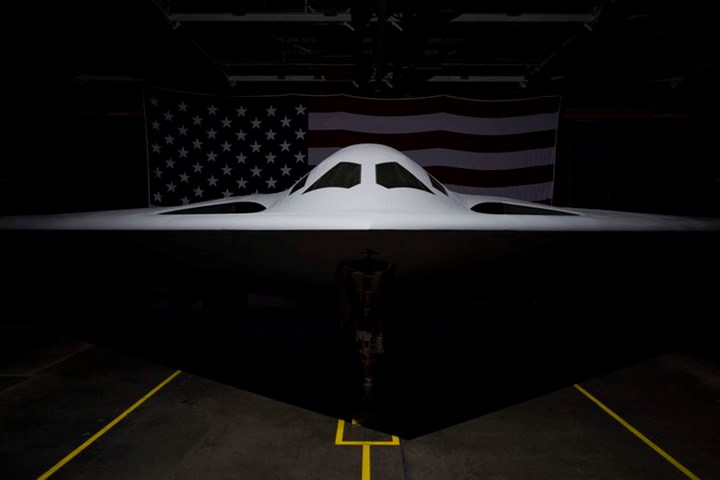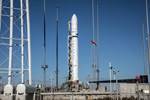Northrop Grumman, U.S. Air Force introduce B-21 Raider
The sixth-generation, composites-intensive strategic bomber aircraft represents new capabilities and flexibility supported by an advanced digital ecosystem.

Photo Credit: Northrop Grumman
On Dec. 2, (Falls Church, Va., U.S.) and the U.S. Air Force (USAF, Washington, D.C., U.S.) unveiled the B-21 Raider, a strategic bomber aircraft that makes extensive use of composites. The B-21 joins the nuclear triad as a visible and flexible deterrent designed for the USAF to meet its most complex missions.
“The Northrop Grumman team develops and delivers technology that advances science, looks into the future and brings it to the here and now,” Kathy Warden, chair, chief executive officer (CEO) and president, Northrop Grumman, says. “The B-21 Raider defines a new era in technology and strengthens America’s role of delivering peace through deterrence.”
The B-21 Raider forms the backbone of the future for U.S. air power, according to partners, leading a powerful family of systems that deliver a new era of capability and flexibility through advanced integration of data, sensors and weapons. Its sixth-generation capabilities include stealth, information advantage and open architecture.
“The B-21 Raider is a testament to America’s enduring advantages in ingenuity and innovation. And it’s proof of the Department’s long-term commitment to building advanced capabilities that will fortify America’s ability to deter aggression, today and into the future. Now, strengthening and sustaining U.S. deterrence is at the heart of our National Defense Strategy,” Secretary of Defense Lloyd J. Austin III adds. “This bomber was built on a foundation of strong, bipartisan support in Congress. And because of that support, we will soon fly this aircraft, test it and then move into production.”
The B-21 is capable of networking across the battlespace to multiple systems, and into all domains. Supported by a digital ecosystem throughout its lifecycle, the B-21 can quickly evolve through rapid technology upgrades that provide new capabilities to outpace future threats.
“With the B-21, the U.S. Air Force will be able to deter or defeat threats anywhere in the world,” Tom Jones, corporate vice president and president, Northrop Grumman Aeronautics Systems, says. “The B-21 exemplifies how Northrop Grumman is leading the industry in digital transformation and digital engineering, ultimately delivering more value to our customers.”
The B-21 Raider is named in honor of the Doolittle Raids of World War II when 80 men, led by Lt. Col. James “Jimmy” Doolittle, and 16 B-25 Mitchell medium bombers set off on a mission that changed the course of World War II. The designation B-21 recognizes the Raider as the first bomber of the 21st century.
Related Content
-
What you might have missed at Paris Air Show 2025
A surge in defense spending, partnerships in hydrogen propulsion and new combat aircraft agreements, many backed by composites industry leaders, culminated the 55th Paris Air Show.
-
MATECH C/ZrOC composite is deployed in hypersonic aeroshells
Ultra high-temperature insulating CMC targets hypersonics, space heat shields and other demanding applications, tested up to 2760°C under extreme stagnation pressures.
-
U.S. Navy contract to advance Cambium C/C composites for hypersonics
Cambium aims to further optimize its phthalonitrile-based thermal protection portfolio to create a secure domestic supply for U.S. hypersonics.






